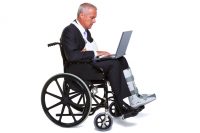Prescription Painkillers: Two Strategies for Easing the Pain
According to the Centers for Disease Control and Prevention (CDC), more than 22,000 people die annually from overdoses of prescription painkillers, which now contribute to more deaths than all illegal drugs such as heroin and cocaine. Workers who use prescription painkillers—particularly those in safety-sensitive positions such as operating machinery—may be at increased risk for incidents, […]










